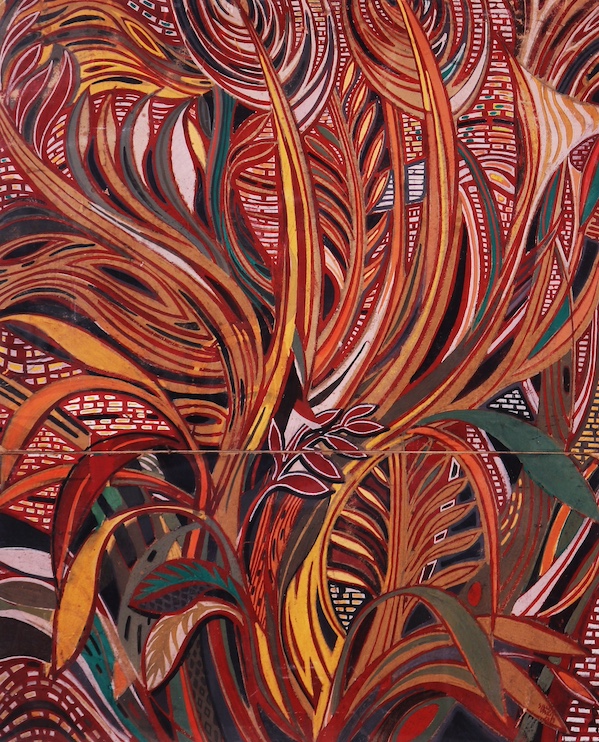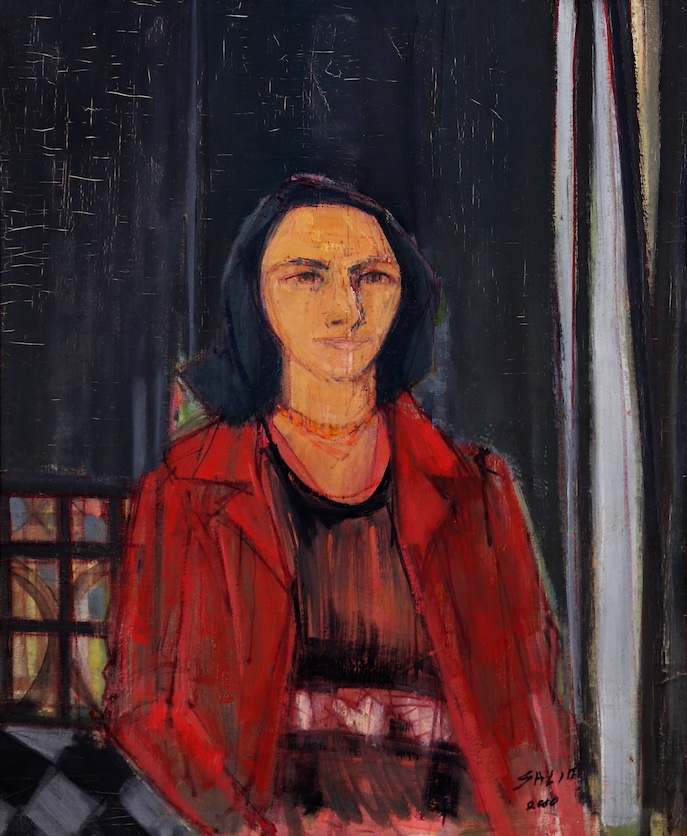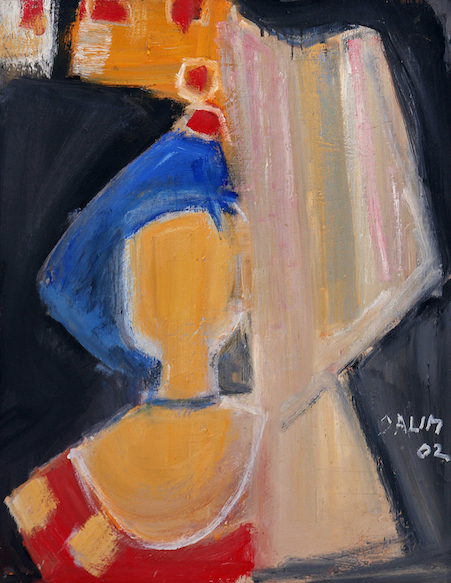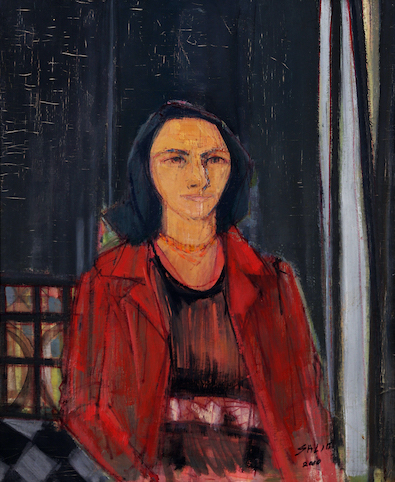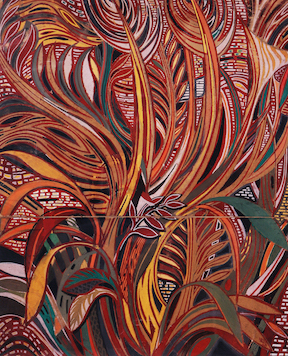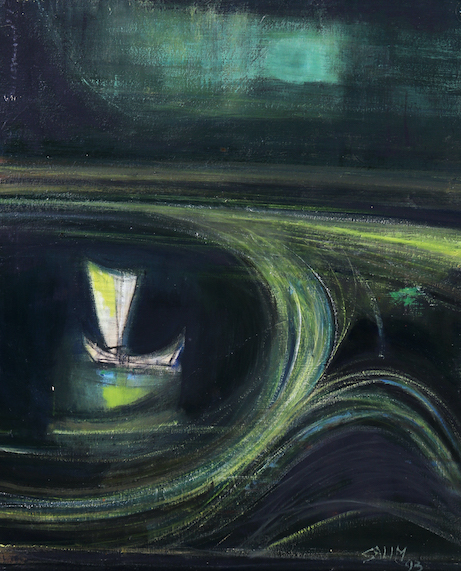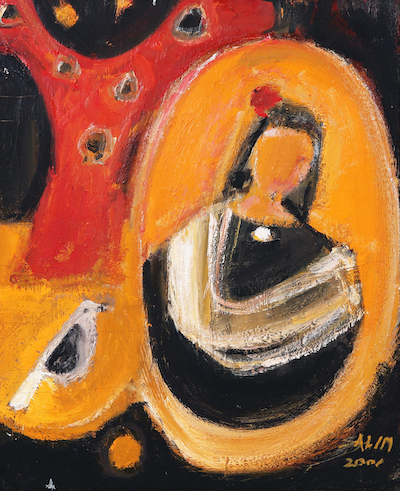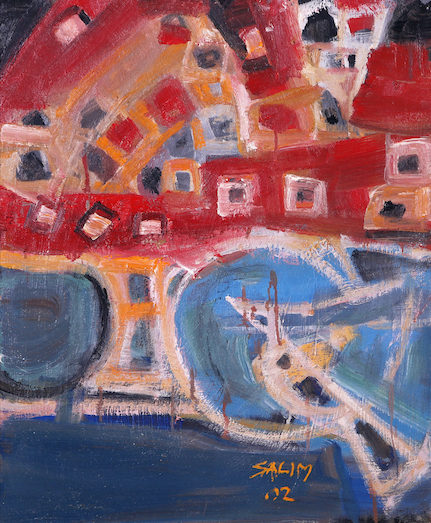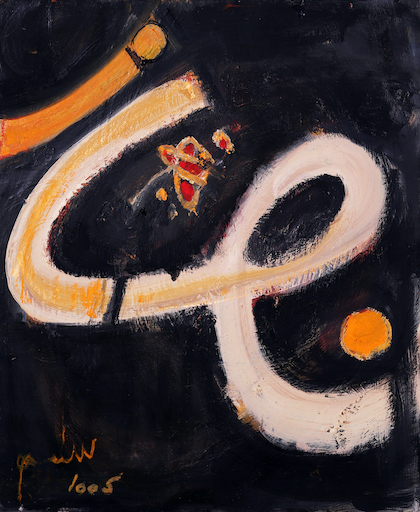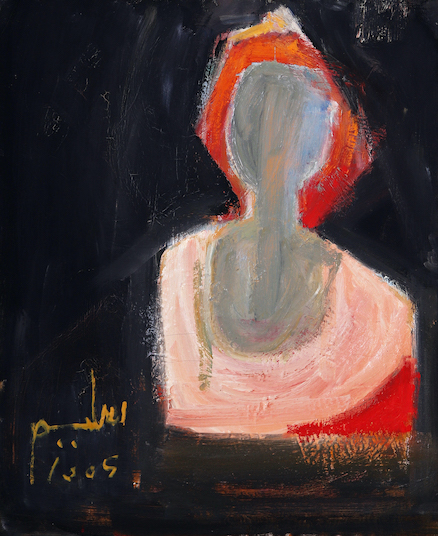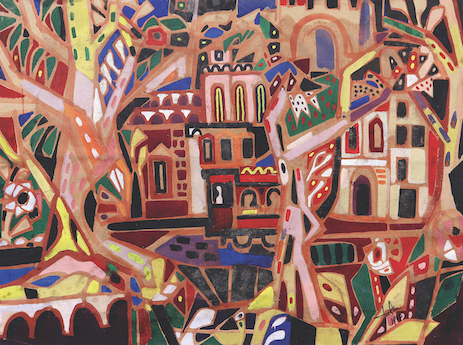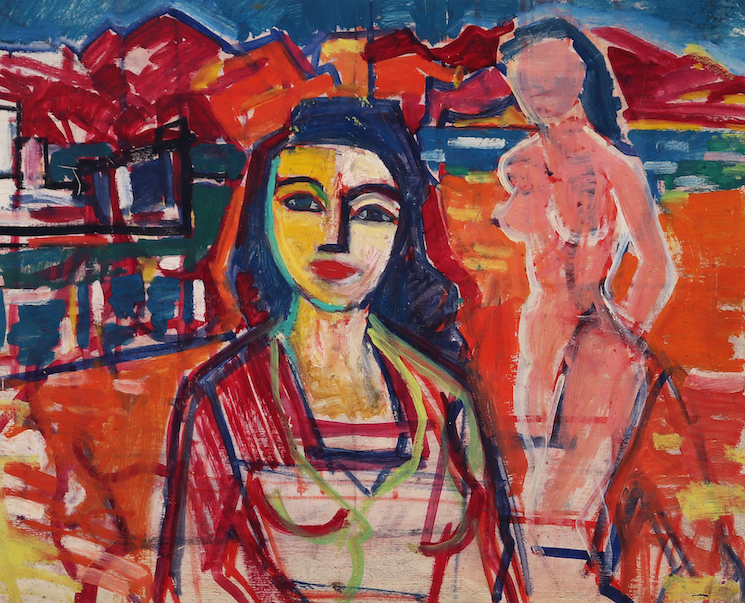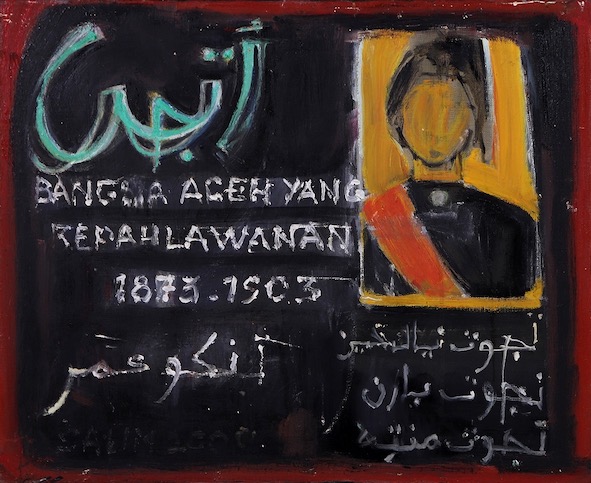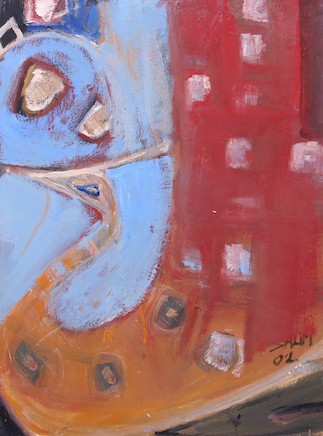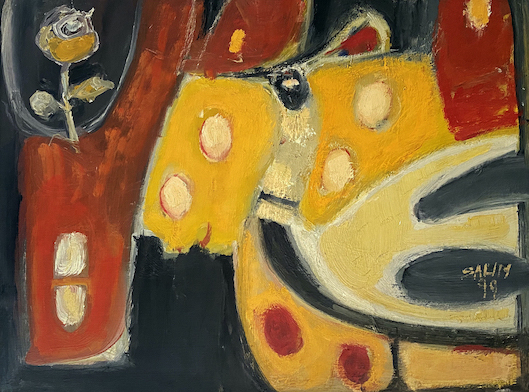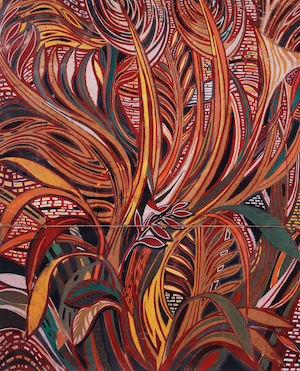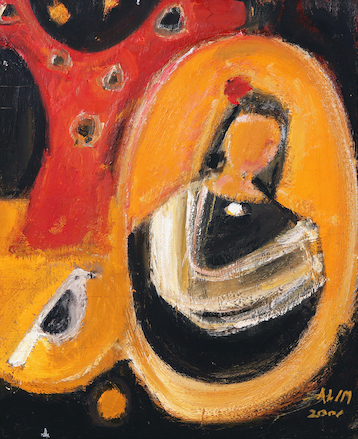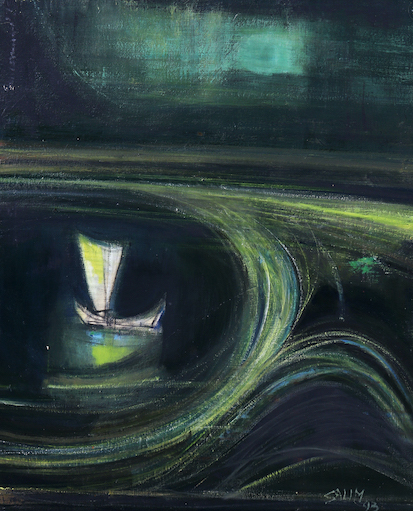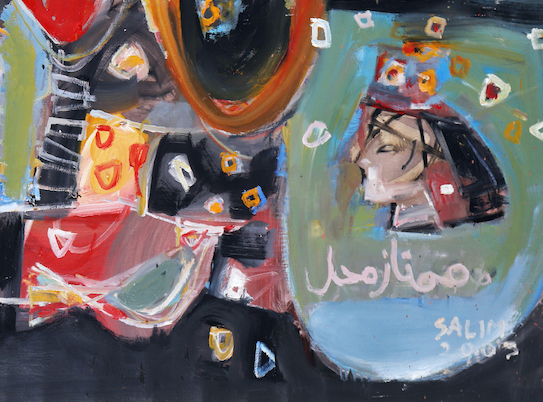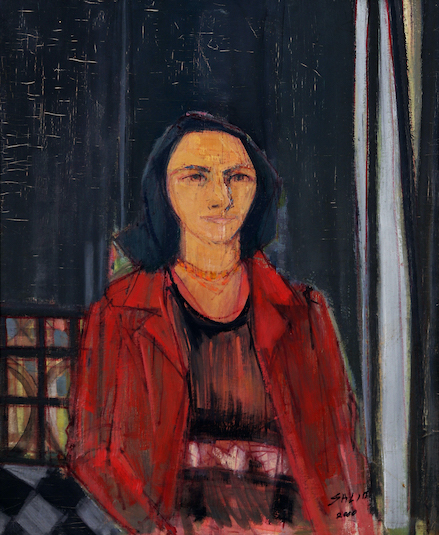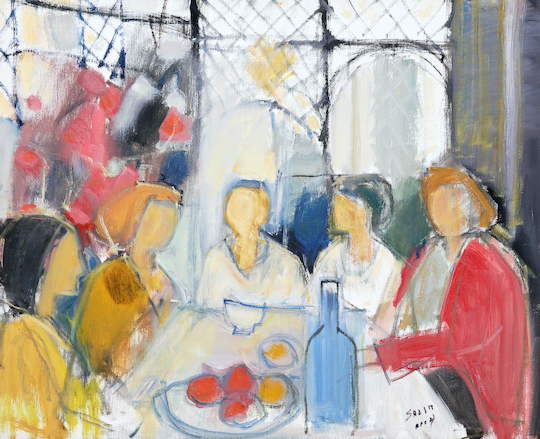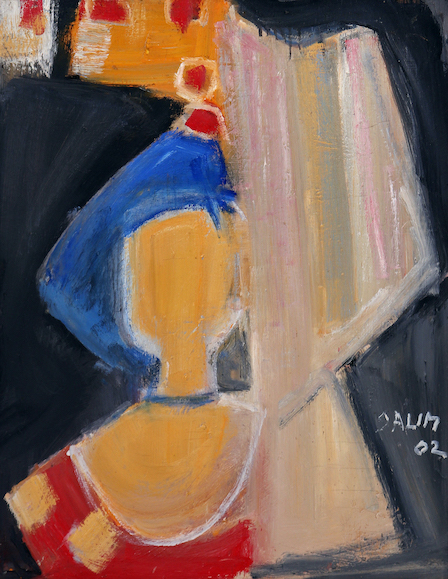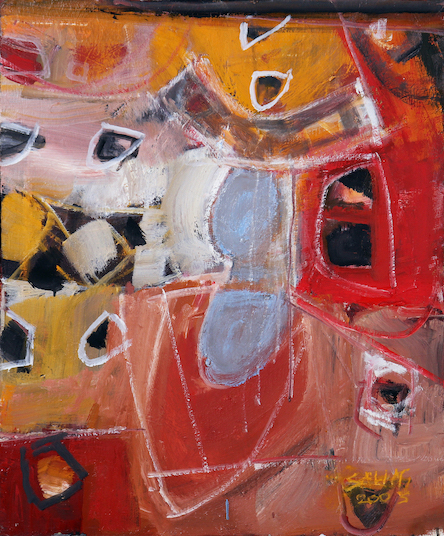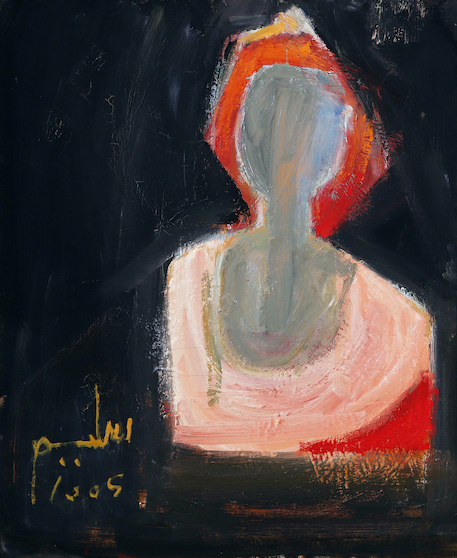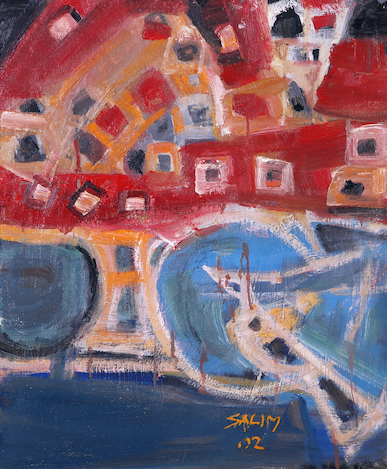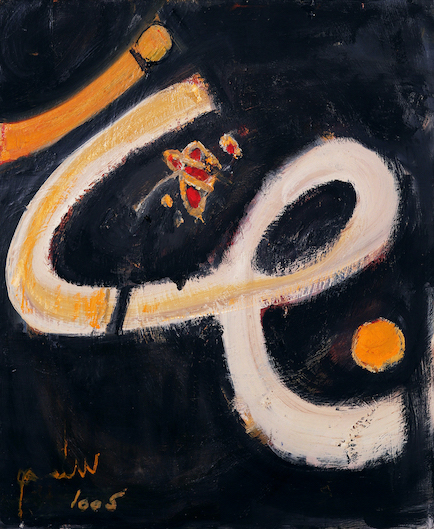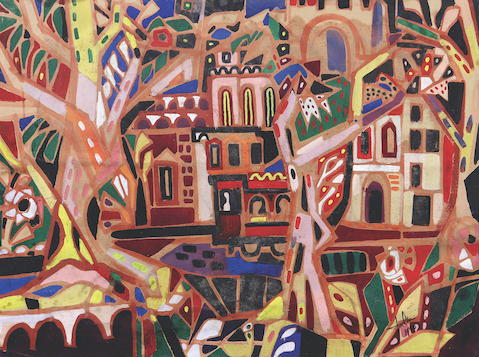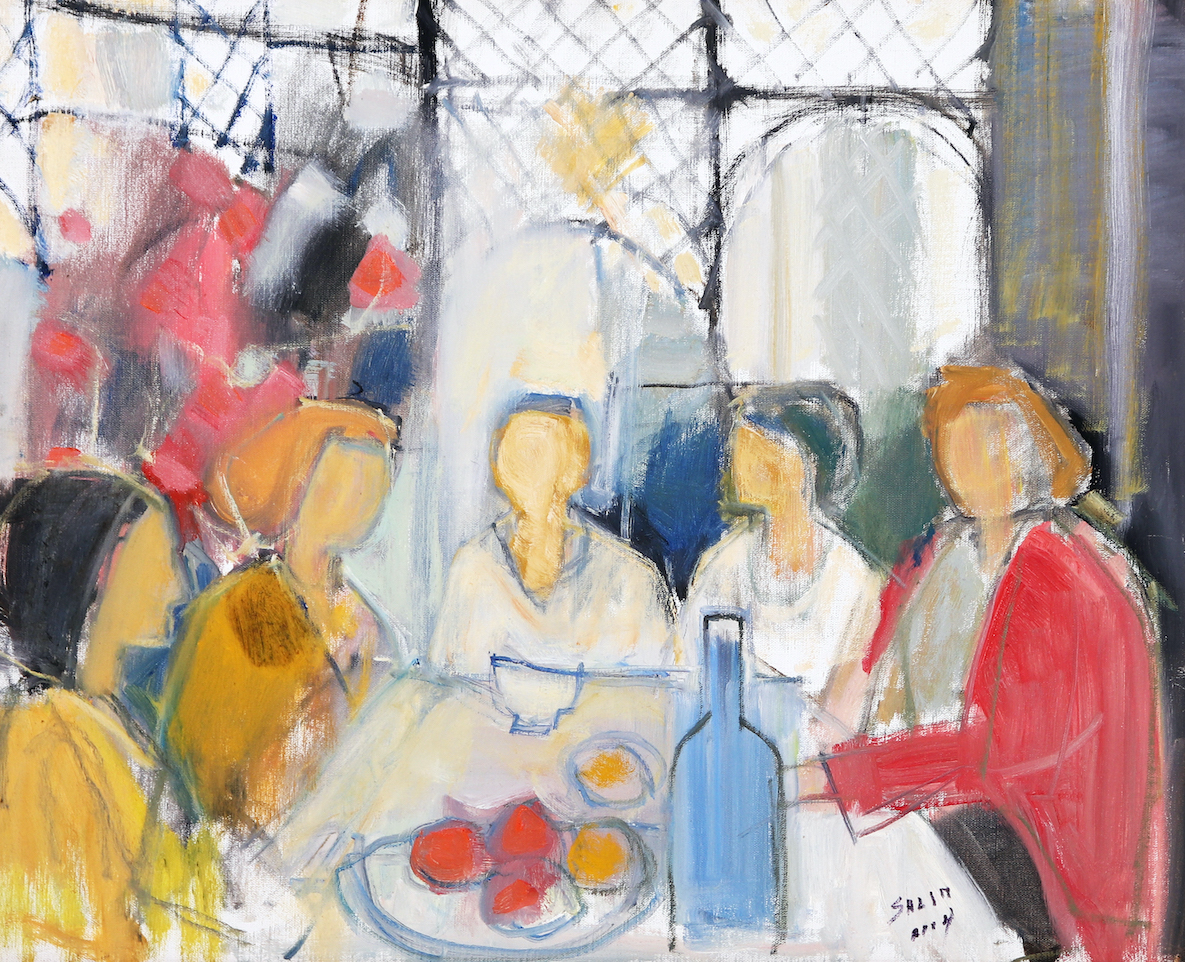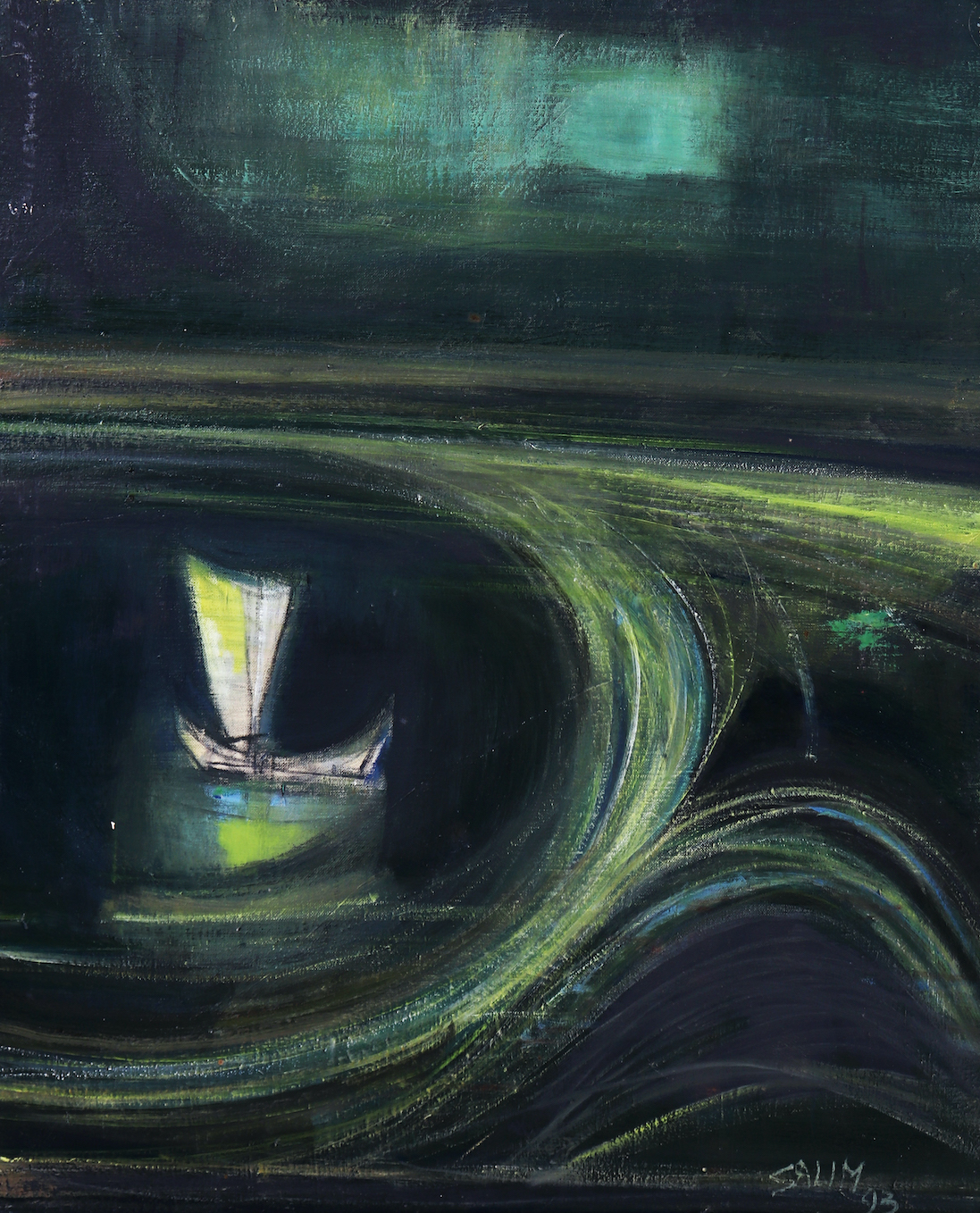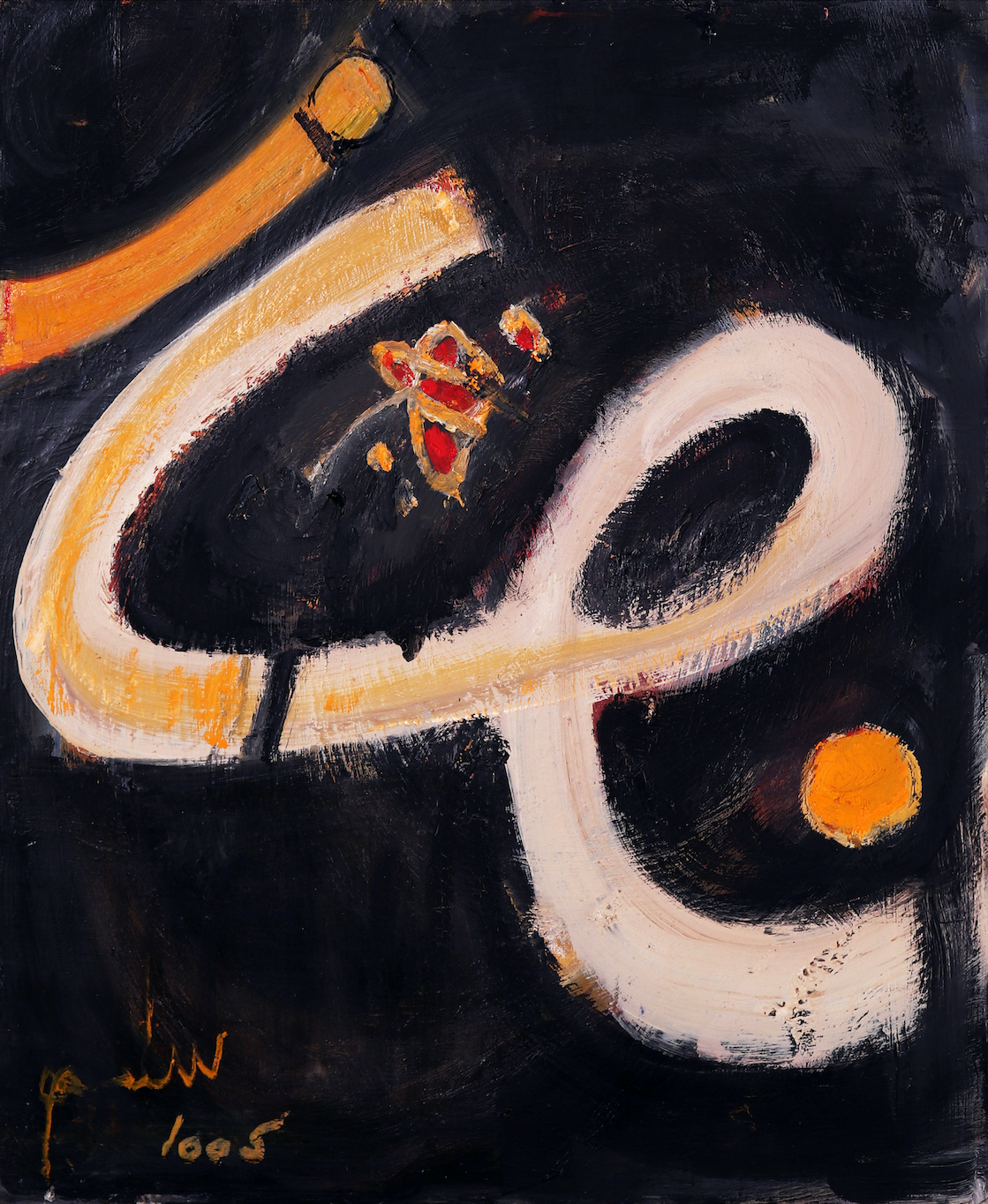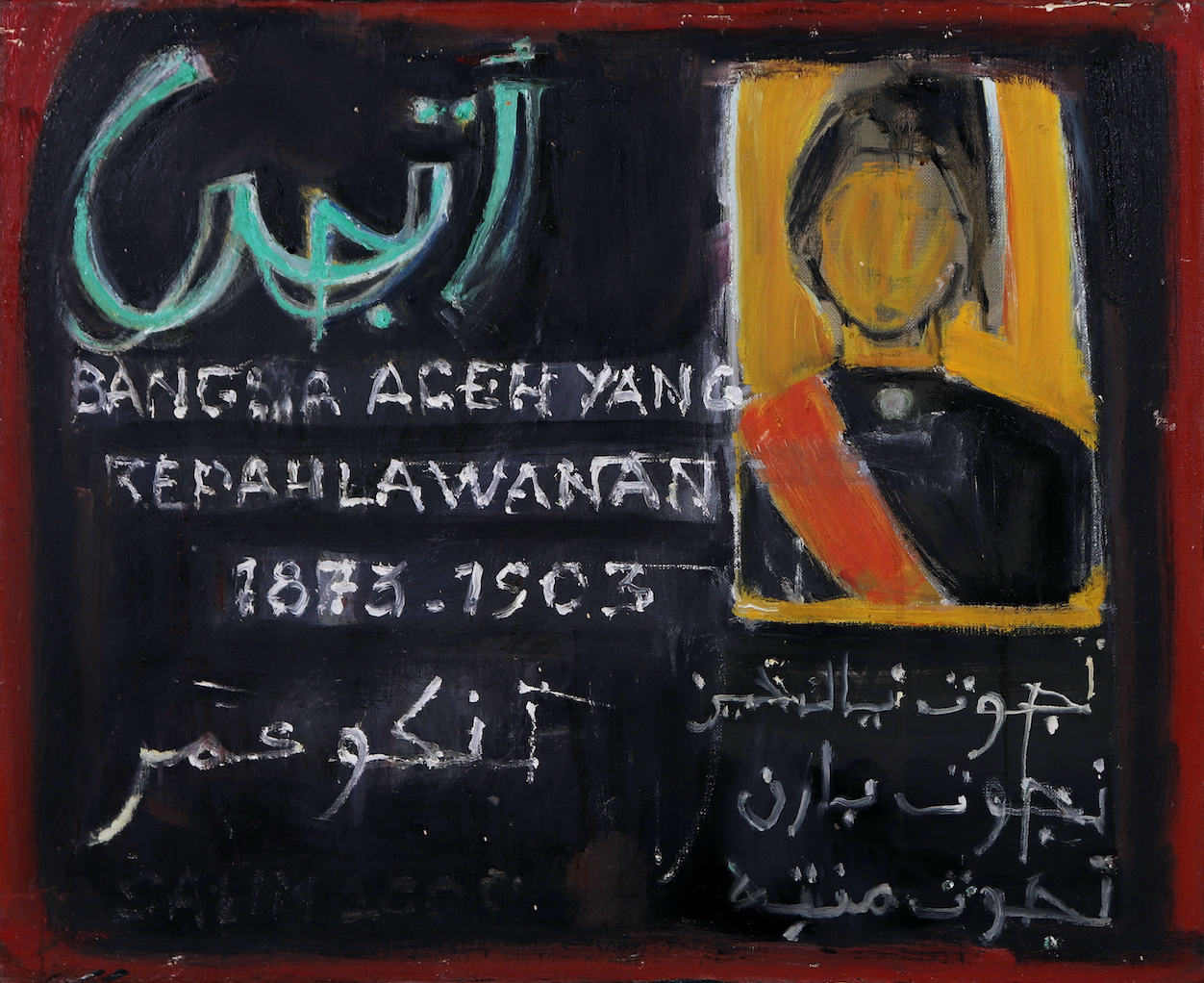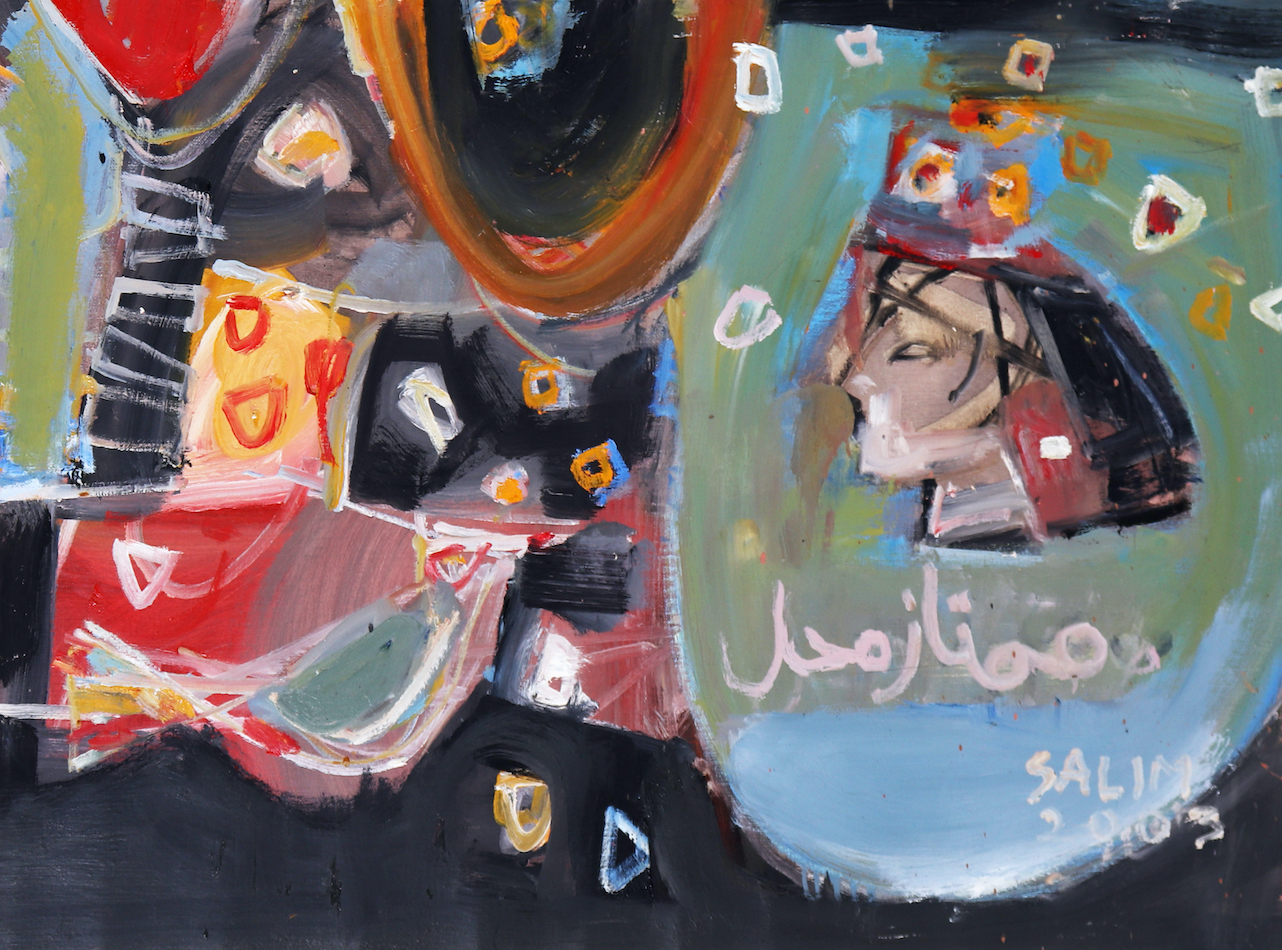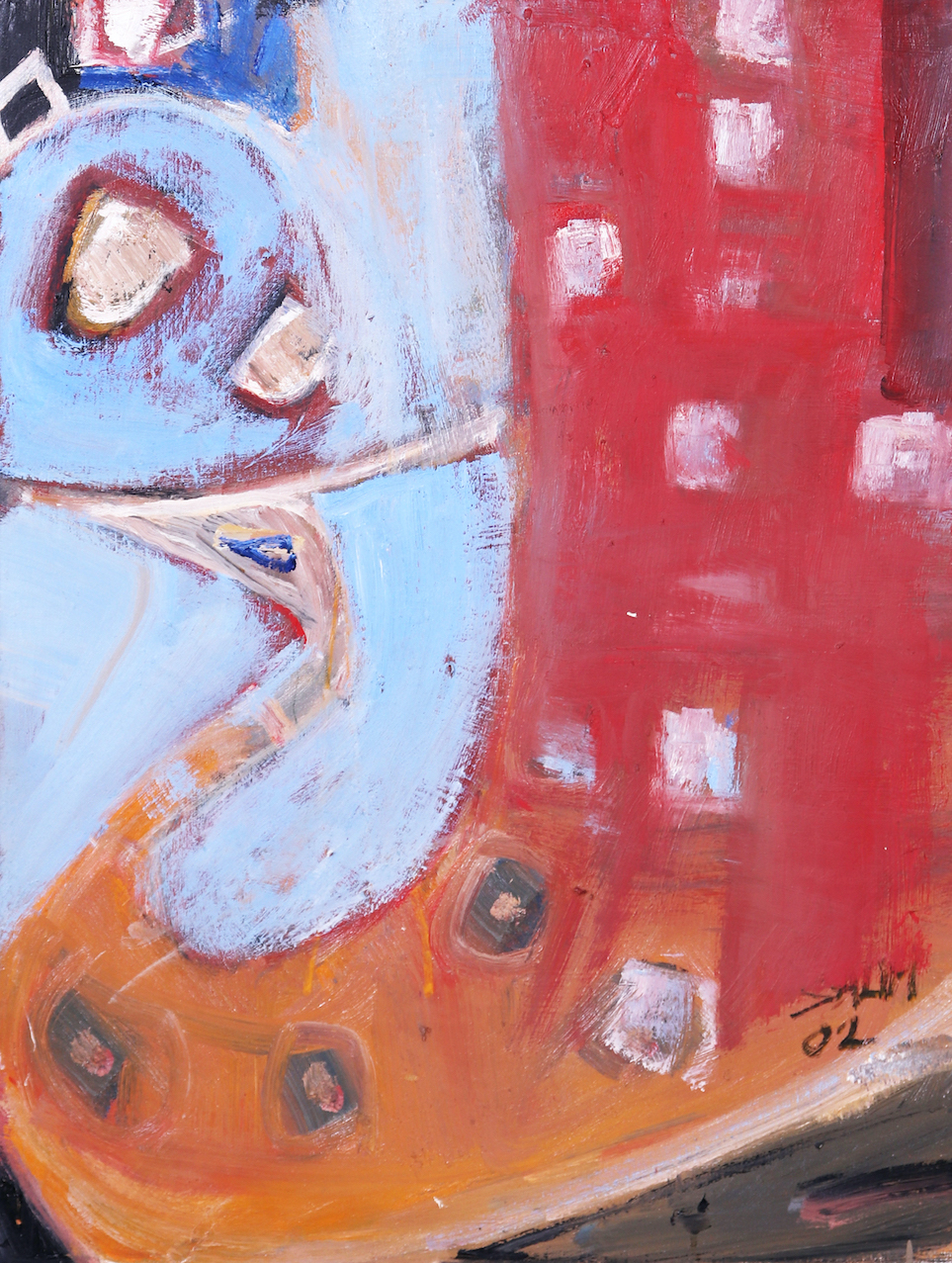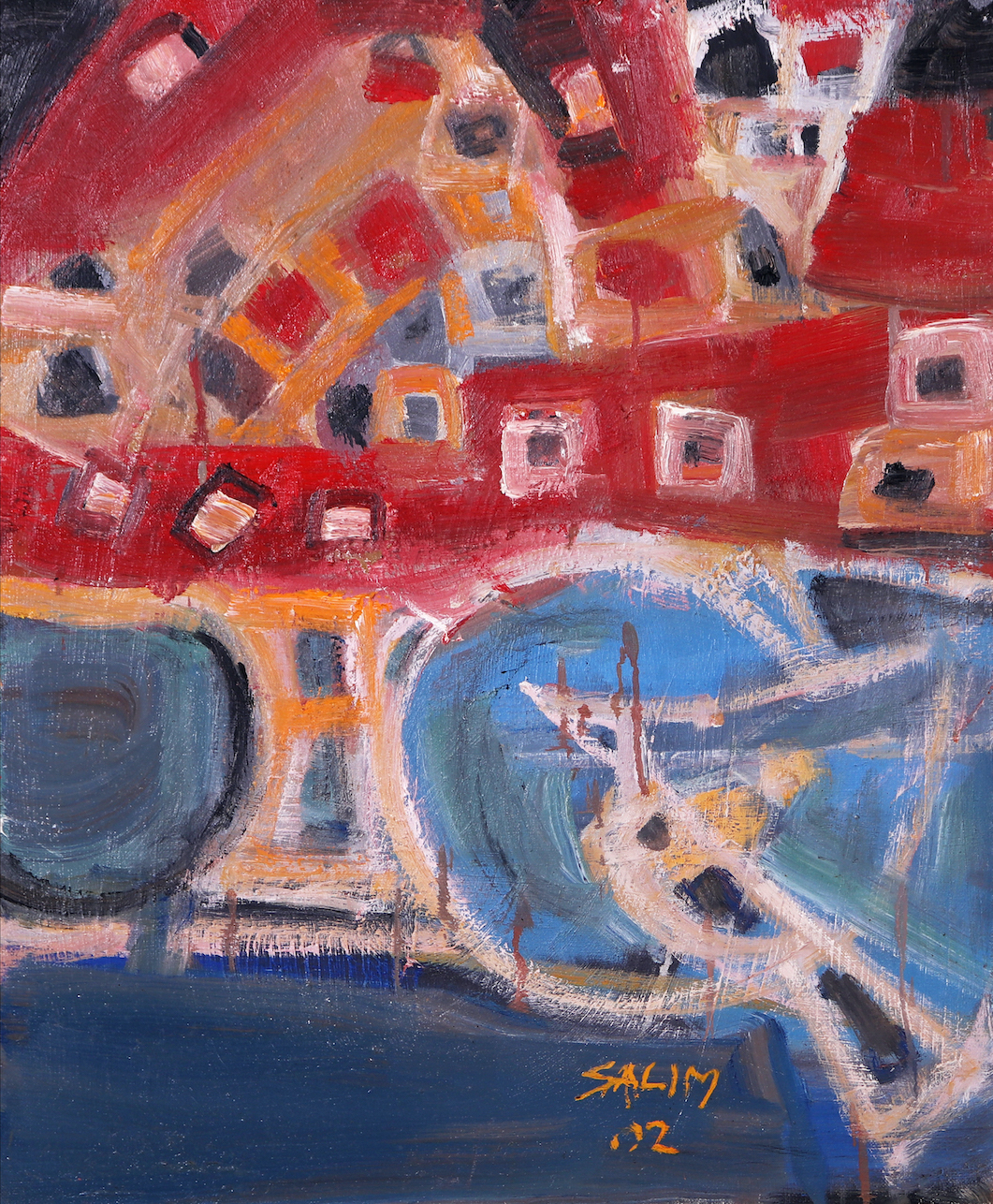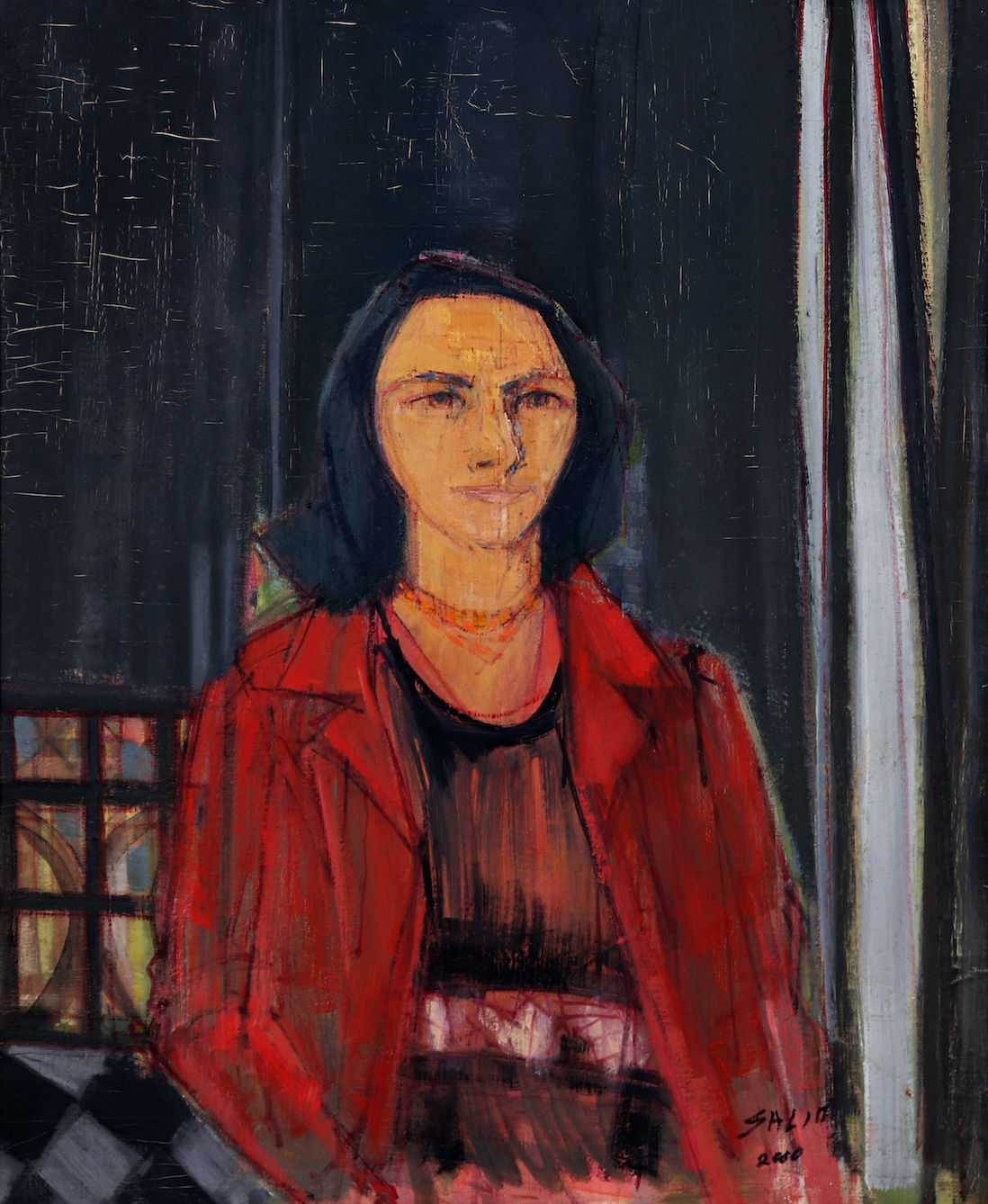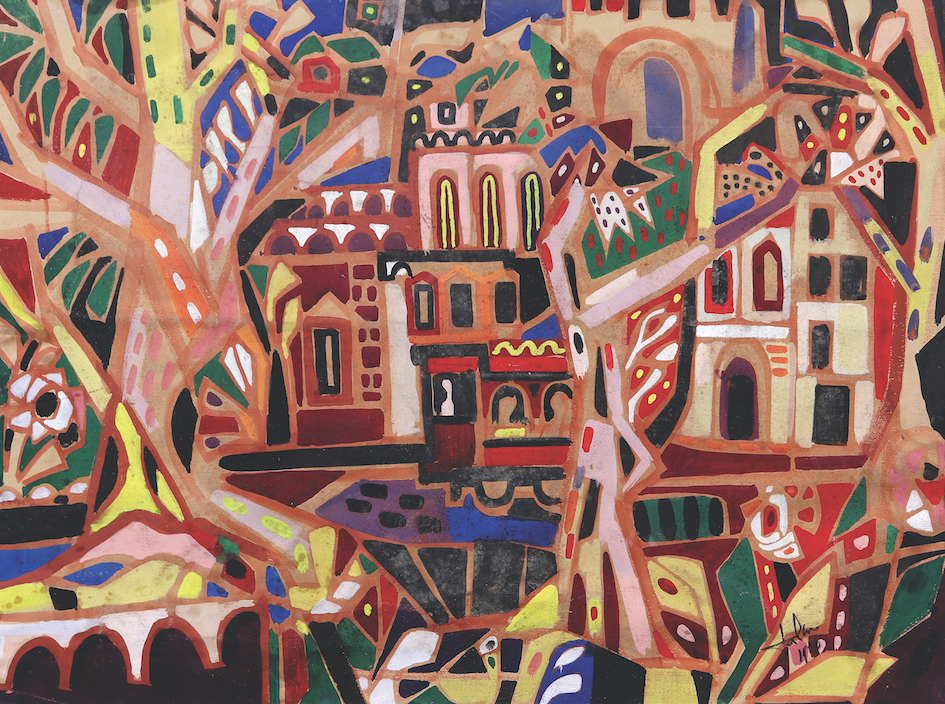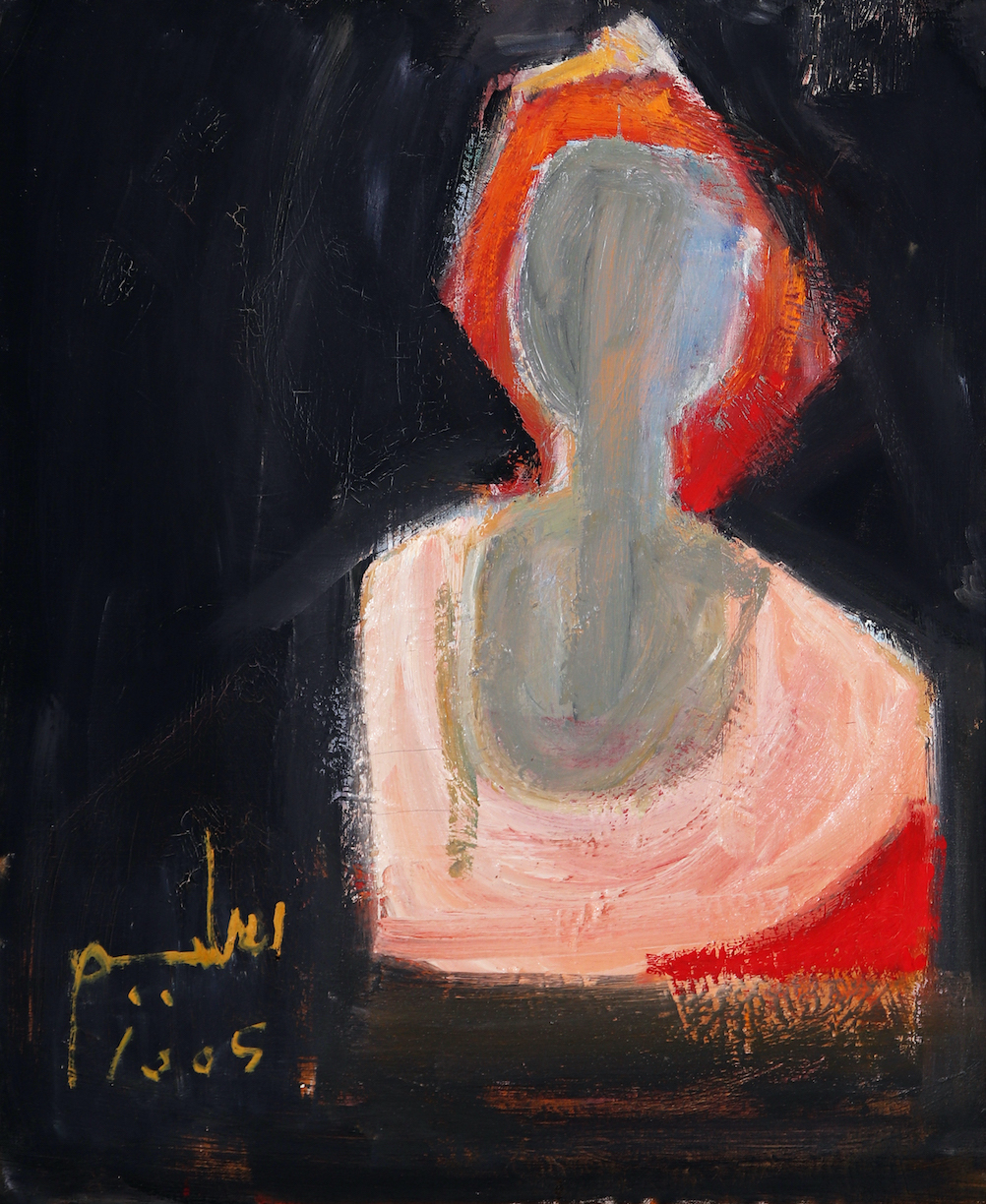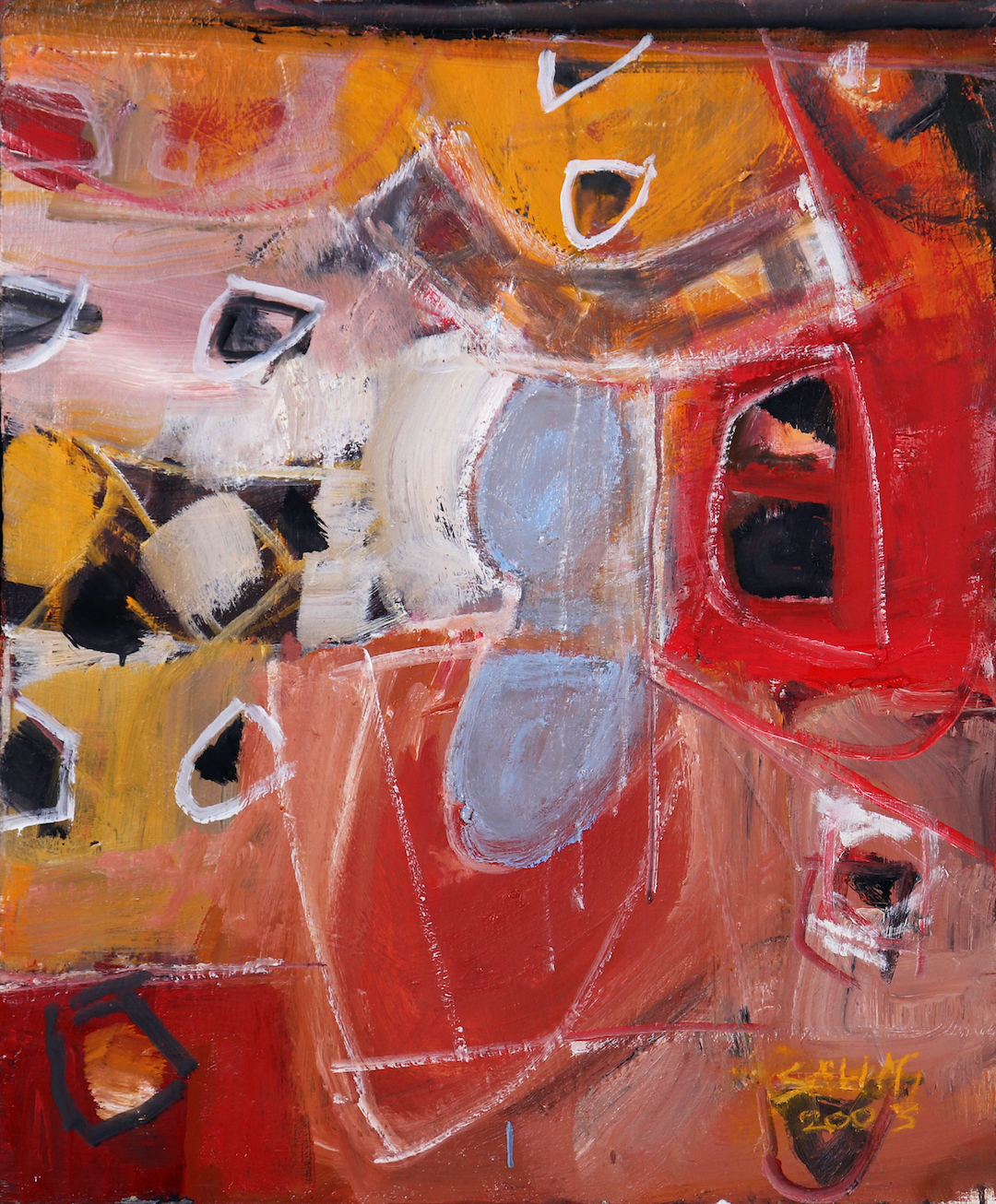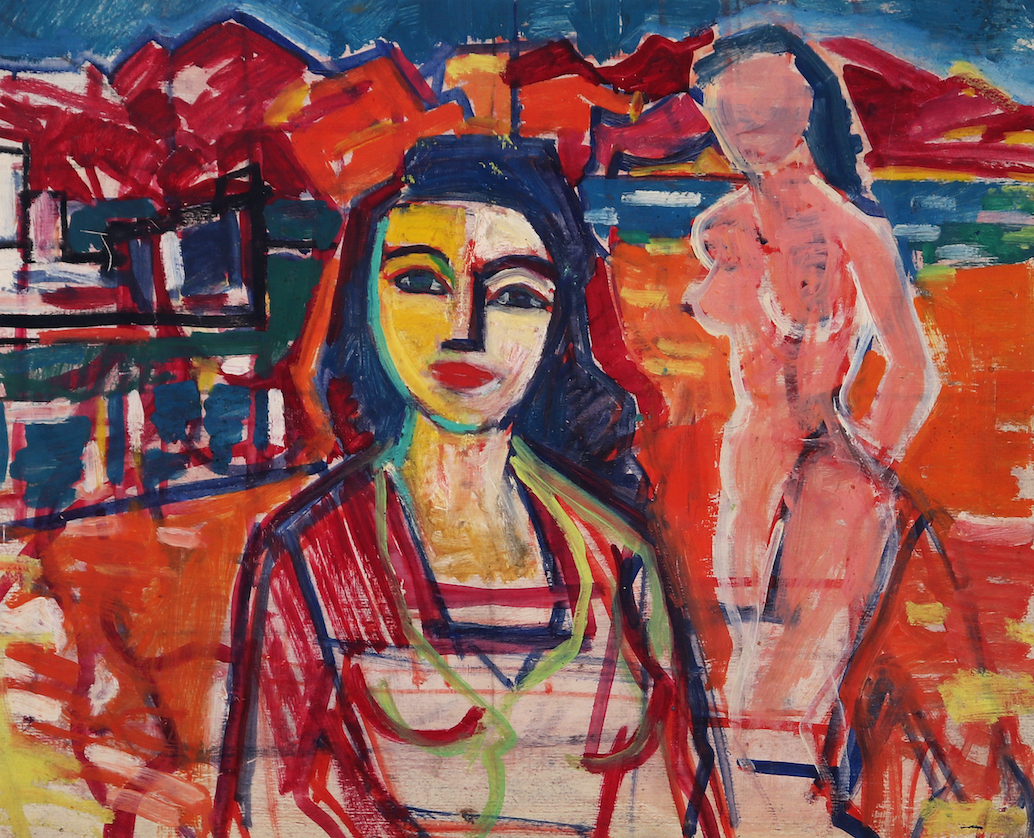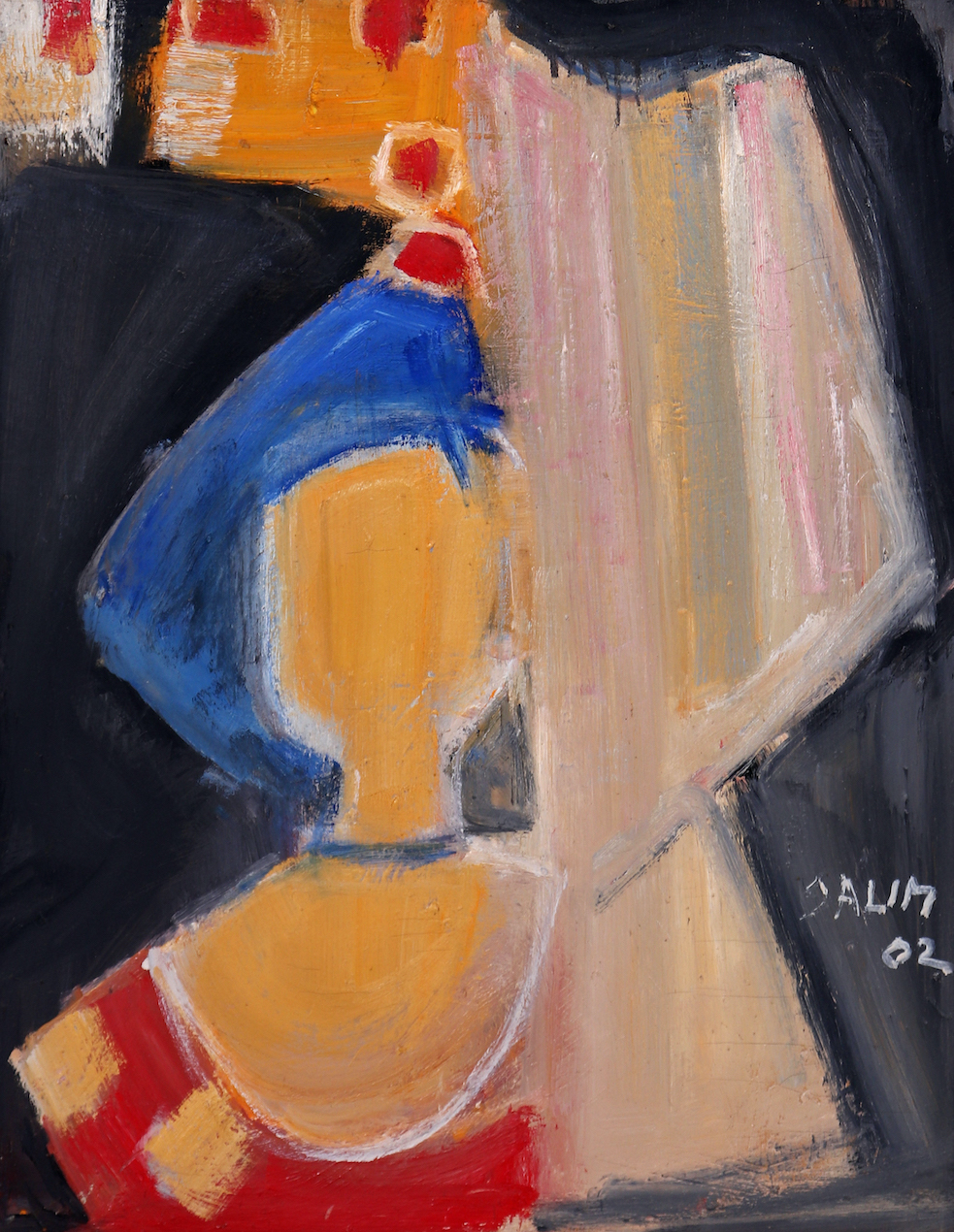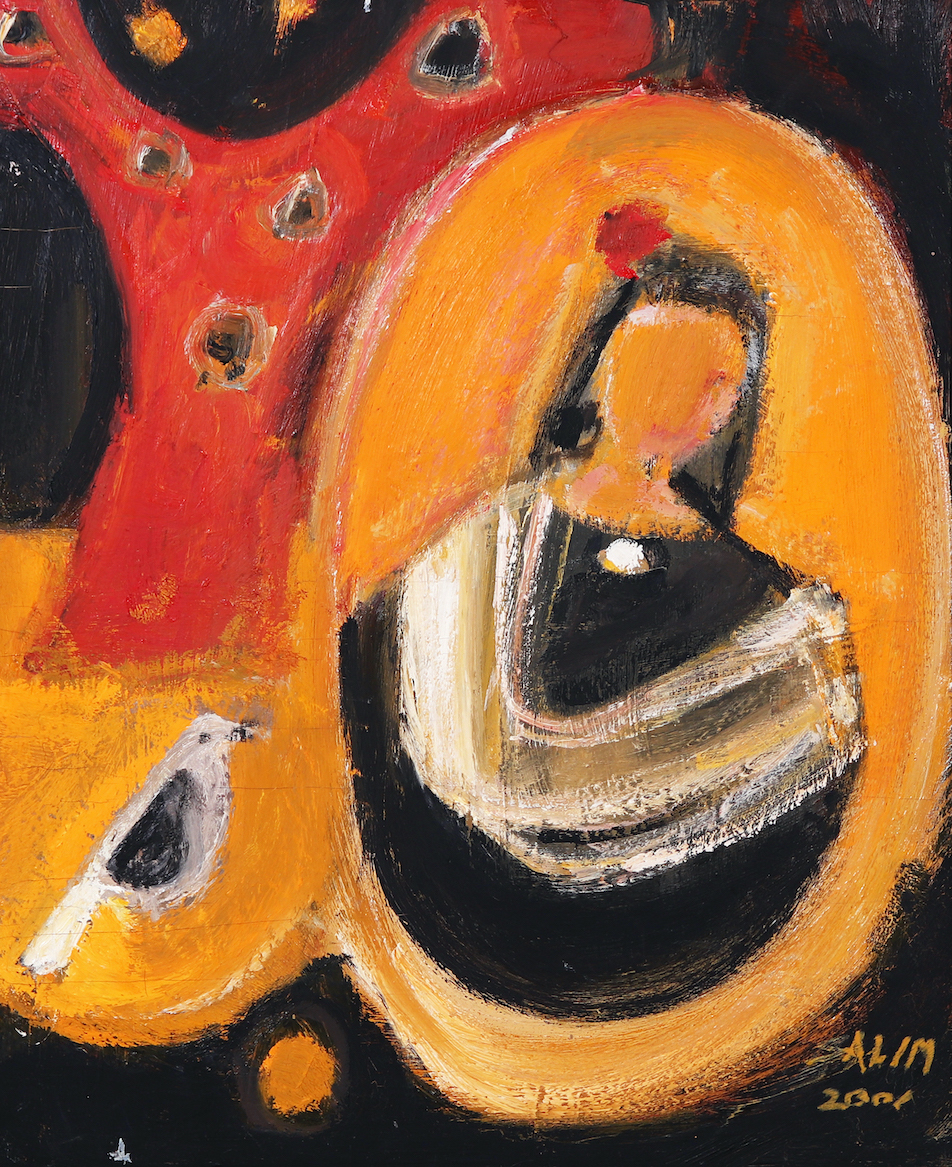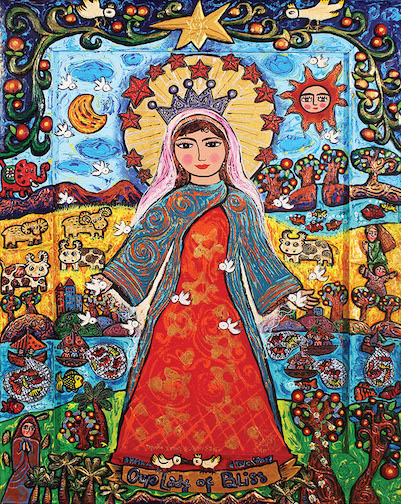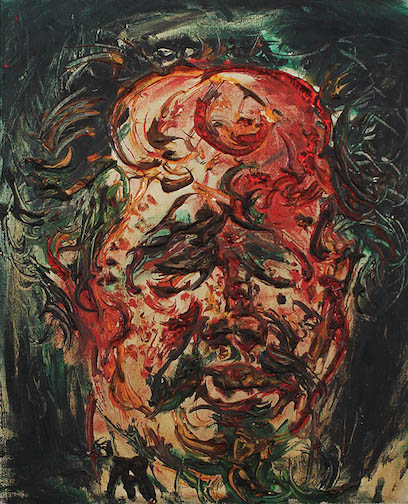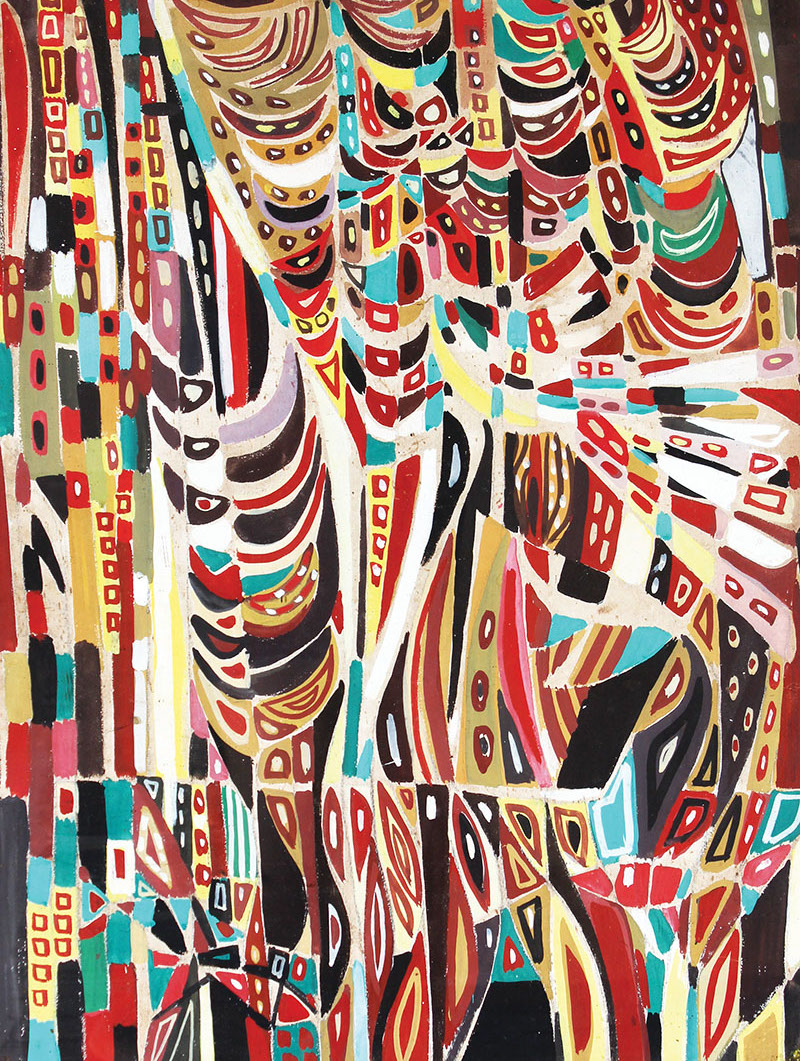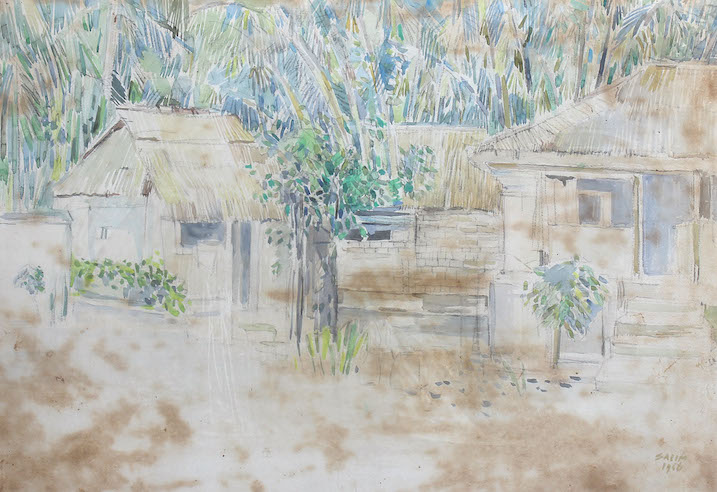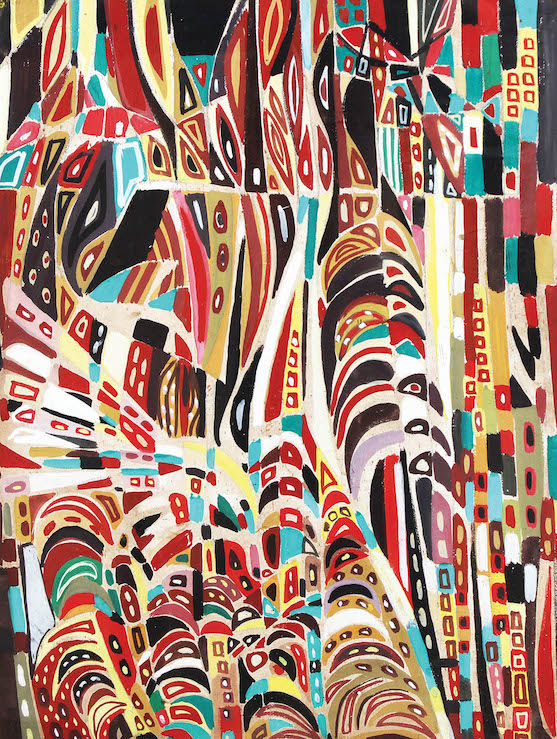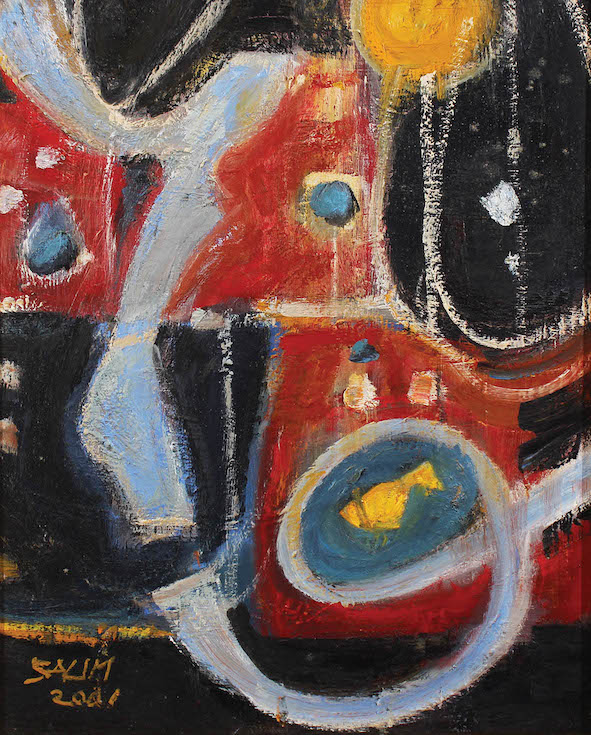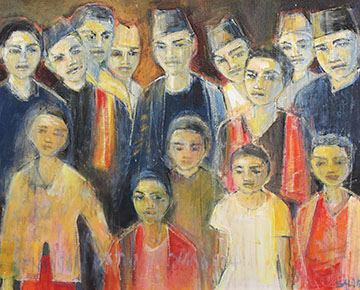Salim

| (Medan, N. Sumatra, 1908 - Paris, France, 2008) |
Salim, Our Artist in Paris,
Now at Our Auction in Jakarta
Until he passed away in Paris over a decade ago at the age of 100, the Indonesian artist Salim has lived there since 1957, and also for a few years in the 1920s. Since he moved to Europe in 1912, he only visited Indonesia five or six times. In the Indonesian art world, he was known as “our man in Paris”.
In a 1946 article on Salim published by Merdeka weekly it is said that nobody knows where Salim came from. It mentions that he emerged in Holland as a young foster child of a former planter from Deli, East Sumatra. Even to his closest friends he never revealed who he really was. An article published in the Konfrontasi periodical in 1956 mentions that he was born in Medan, North Sumatra on 3 September 1908.
After completing his high school studies at Arnhem, he left his foster parents to pursue his interest in art. In particular, he was a believer of “l’art pour l’art” (art for art’s sake), and therefore le was bound for Paris. When he arrived in Paris with very little money, he was faced with the reality that becoming an artist was not as easy as he imagined. Therefore he had to accept a job as a doorman at the Académie de La Grande Chaumière, an art academy. Due to his handsome appearance, the owner of the academy, apparently a French aristocratic lady, eventually allowed him to study there. Not only did he not have to become the guard the entrance and do the chores of a porter anymore but he also became one of the favorite students of the owner of the academy. The following year, 1929, he attended Académie Léger an academy that Fernand Léger set up with his colleagues and friends, including Amédée Ozenfant, where art students could study art, free of charge.
After his adventures in Paris he returned to Amsterdam and became acquainted with Indonesian students who studied there, among others Mohammad Hatta and Sutan Sjahrir. They often discussed matters about art, culture, and society. This sparked his interests towards his home country. He intended to visit the Netherlands Indies, where he hoped to propagate his ideals of “l’art pour l’art”.
In the early 1930s Sjahrir's brother-in-law, Djoehana Wiradikarta, obtained his medical degree in Holland and was returning home with his family. By working as the caretaker of Djoehana’s children during the month-long journey, Salim was able to join them to the Indies. In Batavia, he worked at an advertising company called the Java Neon Company. He also assisted Sjahrir and Hatta both at their PNI-Pendidikan party and the Daulat Ra'jat magazine. The two prominent politicians were eventually exiled to Boven Digoel, and this left Salim to introspect. Throughout his stay in the Indies, he faced the grim reality that it was under colonial rule. Whereas in Europe he lived as an equal to others, in his own home country he was subject to the colonial social structure that was based on racial classification. He faced discrimination and subordination, something that he had not experienced before. Therefore he decided to return to Europe. “I prefer to die hungry in the artistic center of the world, rather than to live full of abundance in a colonized land, feeling depressed,” he is quoted to have said in the periodical Konfrontasi in 1956, reminiscing his experiences in the Indies in the 1930s.
He started exhibiting in Holland, initially in a joint exhibition with artist Theo Bennes in the Santee Landweer gallery, October to November 1936 and then with J. Sjollema at Helen Spooi Gallery, Oct 1939. After World War II, disappointed with the Netherlands return to claim Indonesia as its colony, the artist moved to Sète, a town in France. He held his first solo exhibition there in 1948. In October the following year, Salim held a solo exhibition at the M. L. de Boer Gallery, which was opened by noted Dutch artist Charles Roelofsz. The show was attended by the Indonesian delegation who came to Holland for the Round Table Conference held in The Hague that year, which led to the Dutch recognition of Dutch sovereignty.
In this exhibition, Salim received praise from Dutch critics. “It is clear that in a part of his works exhibited, Salim underwent the influence of Raoul Dufy, the French painter, illustrator, designer of gobelins and printed fabrics and ceramist. This can be seen, for example, in a festive face on a Séte decorated with flags, where sailing competitions are held in front of a large public; in bathers on the beach; in the half figures of girls or a fisherwoman in her stall on a stock of ships populated; in his parks and houses. The strong colors radiate joy, healthy optimism,” writes one critic. “This artist from ‘the belt of the emerald around the equator’ has the view of a European painter. There is nothing in this work that reminds us of the land of his birth, or it must be the fierce flare of the sun, all of which glow. Salim upholstered his works, paintings, gouaches and pastels, gladly with figures, sometimes one or two women in the foreground, then another swarm of people like at the ‘Feast in Sète', numerous figures, quickly set up, lively and lively, as part of the celebration. The park in Montpellier reminds us of Cezanne, although this in no way means that Salim would be a slave follower of the European master. On the contrary, he has a personal perspective on what inspires him to paint, while the sun's glow from his native country appears to accompany him on his many wanderings through Europe and thereby lends his art a special charm,” writes another.
Salim decided to visit his home country, now a new republic, once again.
In Indonesia, his solo exhibition was first held in 1951 with the support of the Foundation for Cultural Cooperation, featuring twenty-five paintings all done in France. The show was opened by Sjahrir, who mentioned that had known him for a long time. He said that during that time, while he himself was still unsure about his purpose in life, Salim had already known that his life would be a balance of beauty, justness, and honesty, and that is what we can see through his works in the exhibition. Critic Trisno Sumardjo was also fair in his review of the exhibition. He said that we have look at Salim’s art in context. It would not be appropriate to expect to see Eastern, nationalist nor proletariat values in his works. instead, if we view them using universal values, we can see that the world he reveals is beautiful, as he is an artist without prejudice nor pretense, a true modernist.
In 1956 Salim exhibited at the Balai Budaya, presenting thirty-three works he made during his four-month stay in Indonesia. In the Konfrontasi periodical, artist Baharudin Marasutan wrote that he found the painting Bunga (1950) most attractive. “Through this painting Salim created beauty that cannot be translated with words. He has added an subtracted something to the forms, lines, colors of the object with a compassion, that leads us to converse with our emotions. Here he has created a decorative interpretation as a variation of batik motifs,” he explained. In conclusion, Baharudin wrote that he hoped that Salim’s visit to Indonesia would be useful towards his further artistic development in Europe.
From 1957 until his death in 2008, Salim lived in an apartment in the city of Neuilly-sur-Seine near Paris. How much his experience in Indonesia contributed to his progress as an artist might need further study, but he did become quite a successful artist, exhibiting in Europe every few years in the 1950s to the 1970s. In the 1970s he won prizes and medals from art festivals in which he participated. He returned to Indonesia to exhibit his works in Jakarta and Bandung in 1974 and 1990. Later he exhibited in Bali in 2001 and Osaka in 2002. As Salim has lived in Europe for most of his life, he is still considered an Indonesian artist, but as he has lived for over 60 years in Paris, he will always be considered as “our man in Paris”.
Now, we have a good opportunity to exhibit and auction some of the remaining works available by “our artist in Paris”, the late Salim. Most of the paintings featured here are works done towards the end of his life, yet still very much shows his mastery of his profession as a painter. There are also some works from the 1970s and 1980s that are astounding. We hope that this brief introduction to Salim and his works will be appreciated by our art enthusiasts here in Jakarta.
